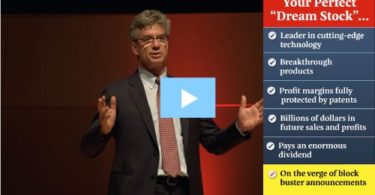Introduction
TCW Strategic Income Fund (TSI) is a closed-end fund that takes an unconventional multi-asset approach to generate income and capital appreciation. Managed by TCW since 1987, TSI invests flexibly across a broad range of assets – from investment-grade bonds and securitized debt to high-yield “plus” sectors like equities and convertible bonds ([1]) ([2]). This unique all-weather strategy is paired with a conservative balance sheet: TSI currently employs no leverage (borrowing), which is unusual among income-focused funds ([3]). The fund’s share price trades at a slight discount to its net asset value (NAV), offering value-conscious investors an attractive entry into a diversified income portfolio ([2]). Below, we dive into TSI’s dividend policy, leverage profile, valuation, and key risks to understand how its unique approach could fit into – and potentially redefine – your portfolio.
Steady Income: Dividend Policy, History & Yield
TSI follows a “pass-through” dividend policy, meaning it pays distributions only from actual earnings (cash flow) of its portfolio, avoiding destructive return-of-capital payouts ([3]). The fund’s Board instituted this income-based distribution policy in 2013, committing to quarterly dividends funded by net investment income and/or realized gains, in compliance with regulated investment company rules ([4]). In practice, TSI has delivered a steady quarterly dividend for investors, currently set at $0.06 per share. This equates to an annualized yield in the mid-4% range at recent market prices ([2]). For example, as of late 2024 the distribution rate was about 4.6% with a $0.06 quarterly payout ([2]).
Importantly, TSI’s disciplined policy has meant no return-of-capital in its payouts – all dividends are covered by income or occasional realized gains. In fact, the fund often earns more income than the regular dividend requires, and it distributes the surplus via year-end specials. In December 2024, TSI announced a $0.205 per share total distribution, combining the regular $0.06 quarterly dividend with a $0.145 special distribution drawn from excess net investment income ([5]). The prior year showed a similar pattern, with a $0.115 special on top of the normal payout ([4]). These bonuses signal that TSI’s earnings comfortably cover its dividend – and then some. Over the past few years, the fund has gradually increased its dividend when sustainable (TSI’s payout was modestly raised multiple times pre-2020), but management has also shown willingness to trim the dividend during tough markets (the quarterly rate was cut from $0.08 to $0.06 in 2020’s turmoil to align with lower income) – underscoring its commitment to real, stable income. For current investors, the takeaway is a well-covered ~5% yield that grows in good times and adjusts prudently in leaner periods.
Leverage and Capital Structure
One aspect that truly sets TSI apart from many peer funds is its conservative capital structure. While many closed-end income funds juice returns with debt or preferred-stock leverage, TSI carries no debt leverage at all in its portfolio at present ([3]). The fund does maintain a credit facility (up to $70 million available) with a bank at roughly Fed Funds + 1.1% interest ([6]), but notably “the Fund did not use any of the available $70 million commitment in 2024.” Instead, management declares it will employ leverage only opportunistically – i.e. “when market opportunity is abundant and… deemed accretive to returns” ([6]). In the recent high-rate environment, borrowing costs have been relatively expensive, so TSI chose to stay unlevered and avoid magnifying risk. This restraint helped the fund steer through 2022’s bond bear market without forced deleveraging or outsized NAV damage, a fate that befell some over-leveraged closed-end funds.
Because TSI currently doesn’t borrow, it has no looming debt maturities or interest expenses weighing on its cash flows. (In 2024, interest expense was effectively zero due to no leverage usage ([6]).) The absence of leverage moderates TSI’s risk profile – its NAV isn’t “geared up,” so NAV volatility is lower and the dividend is derived purely from unlevered income. Should conditions turn favorable (e.g. a compelling spread opportunity in credit markets), TSI has the flexibility to tap its credit line (renewed annually) to enhance returns, but any such move would be executed cautiously. The fund must maintain asset coverage of 300% per the Investment Company Act if it borrows, and management is well aware that leverage, while boosting yield, also amplifies volatility ([7]). For now, shareholders can appreciate that TSI’s income and NAV are not riding on borrowed money – a potentially reassuring trait in volatile markets.
Quality of Earnings and Coverage
TSI’s dividend coverage stands out as rock-solid, thanks to the fund’s earnings-first approach. Because the fund only pays out what it earns, distribution coverage is effectively 100% or more from net investment income (NII). In fact, as noted above, the fund had to issue extra year-end dividends the last two years to distribute all the income it earned (to comply with tax requirements for regulated funds) ([5]) ([4]). This means no portion of the dividend has been a return of shareholder capital – an important quality marker for income investors. Many high-yielding funds resort to classifying part of their distribution as return of capital (essentially paying investors back with their own principal), which can be a red flag. TSI’s avoidance of that practice suggests that its ~5% yield is generated organically by interest, dividends, and realized gains in the portfolio.
The fund’s “pass-through” dividend philosophy ([3]) also implies that if portfolio income declines, TSI will adjust payouts rather than dip into unrealized gains or NAV. This disciplined stance contributed to TSI’s long-term NAV preservation. Over time, TSI’s NAV has held up relatively well compared to more aggressive peers, precisely because the fund doesn’t over-distribute. The stable or rising NAV (aside from normal market fluctuations) provides an extra layer of comfort that the income stream is sustainable. Additionally, TSI does not charge a distribution fee (common in some funds that effectively pay the advisor a fee based on distributions); its expense ratio is around 0.97% annually of assets ([8]), which is reasonable given active management across multiple asset classes. In sum, investors can have confidence that TSI’s payout is fully earned and covered, with no gimmicks – a key factor in the fund’s ability to potentially “redefine” an income-focused portfolio with truly dependable distributions.
Portfolio Composition and Valuation
TSI is categorized as a “multi-sector” bond fund, but its portfolio spans far beyond typical bonds ([2]). According to fund reports, non-agency mortgage-backed securities (MBS) – essentially securitized home loans without government guarantee – represent the single largest allocation, roughly 27% of the portfolio ([3]). These assets offer higher yields and are a specialty of TCW’s fixed-income team. TSI complements its MBS holdings with other securitized debt (like asset-backed securities and commercial MBS), chunks of investment-grade corporate bonds, some high-yield corporate debt, and even pockets of equities and convertible bonds when opportunities arise ([1]). This eclectic mix is managed under a controlled-risk framework: as of its latest report, the fund was overweight higher-quality credit and securitized loans, and underweight equities and junk bonds – a stance that helped stability ([1]). For example, in 2021’s rally, TSI’s lighter allocation to equities/convertibles caused it to lag a bit, but its heavier stake in investment-grade and housing loans provided ballast and consistent income ([1]). Overall, the diversification across many income sectors gives TSI multiple return drivers and may reduce reliance on any one market segment.
In terms of valuation, TSI’s market price typically trades at a modest discount to its NAV. Over the past year, the discount ranged from around 2% to 10%, averaging ~7% below NAV ([2]). Recently the gap has narrowed to just a few percent (for instance, $5.16 market price vs $5.31 NAV in late 2024, a -3.2% discount) ([2]). In 2024, TSI’s share price actually outpaced its NAV – rising about 13.4%, versus a 7.3% NAV total return – as the discount to NAV shrank from ~9% to ~3% during the year ([6]). This convergence boosted investor returns and reflects growing market appreciation for the fund’s prudent strategy. Even at current levels, buyers are effectively getting TSI’s underlying assets at a slight bargain (paying ~$0.97 on the dollar). By contrast, some popular leveraged income CEFs trade at premiums to NAV despite riskier profiles. TSI’s discount valuation and moderate ~5% yield suggest a relative value: investors are not overpaying for yield, and they retain upside if the discount were to close fully. It’s also worth noting TSI’s low-beta nature – its NAV fluctuations have been milder than equity markets (the fund’s 5-year beta is well below 1.0 ([9])), underscoring its role as a steady income anchor. For an income investor, TSI offers a combination of reliable yield and a margin of safety (discounted assets), which could be a compelling addition to a portfolio needing stability.
Key Risks and Red Flags
Despite its conservative approach, TSI is not without risks. As a multi-sector bond fund, its performance is sensitive to interest rate risk and credit risk. If interest rates rise further, the market value of TSI’s bond holdings (especially longer-duration assets) could decline, pressuring NAV. The fund’s significant allocation to non-agency MBS and credit securities means it’s exposed to credit spread widening and economic downturns – if homeowners start defaulting or if corporate bond defaults tick up, those asset prices will fall. That said, management’s bias toward higher-quality credit and the lack of leverage help mitigate these risks. In a severe credit selloff, TSI should hold up better than a heavily leveraged high-yield fund, but its NAV would still feel the impact of wider spreads.
Another risk is underperformance in roaring bull markets. TSI’s cautious positioning (limited equity and high-yield exposure) has caused it to lag during periods when riskier income assets surged. For instance, in 2021 the fund trailed its custom benchmark by ~2% because it had a “lower allocation to ‘plus’ sectors – equities, convertibles, and high-yield corporates – which posted strong returns” that year ([1]). In other words, TSI may sacrifice some upside to protect on the downside. Investors seeking maximum yield or total return might be disappointed in go-go market phases when TSI’s unlevered 5% yield pales next to double-digit yields from more aggressive funds. It’s the classic trade-off: TSI is a lower-risk income play, which inherently means it won’t shoot the lights out in risk-on rallies.
A controlled monetary reset called the Mar-a-Lago Accord could revalue gold, squeeze silver and ignite uranium. See Dr. Eifrig's exact 3-step plan to protect and grow your wealth — free today.
There are also a few structural considerations to note. As a closed-end fund, TSI’s market price can deviate from NAV – the discount could widen if the fund falls out of favor, which would hurt shareholders who might want to sell. (During market stress or illiquidity, CEF discounts often enlarge.) TSI’s relatively small asset base (~$250 million) and average trading volume mean liquidity is decent but not immense – large investors should be mindful of bid-ask spreads. Another potential red flag is the possibility of a rights offering or other share issuance. The fund’s shelf prospectus explicitly allows for future rights offerings to existing shareholders, even at prices below NAV under certain conditions ([7]). While management would only undertake this if deemed beneficial for long-term shareholders, such offerings can be dilutive or put short-term pressure on the stock price (until the additional capital is put to work). Shareholders should keep an eye on announcements for any capital raising plans. Lastly, management fees and expenses, at just under 1%, are reasonable but do cut into the yield – and there is an incentive for the advisor to grow the fund (since fees are asset-based). The advisor could, in theory, be tempted to employ leverage to increase managed assets (and thus fees), but the Board’s oversight and the fund’s history suggest alignment with shareholder interests; indeed, TSI has refrained from leverage despite that theoretical incentive ([7]). Overall, the biggest “risk” with TSI may simply be that its conservative strategy delivers a lower yield and return than flashier alternatives, so investors must judge whether they prefer safety and consistency over higher short-term income.
Outlook and Open Questions
Looking ahead, several open questions surround TSI’s strategy and role in a portfolio. One key question is: Will management deploy leverage in the future? So far, they’ve rightly abstained given expensive borrowing costs. But if interest rates decline or credit spreads widen (creating juicy investment opportunities), TSI might utilize some debt to augment returns. How skillfully they time and size any leverage usage will be crucial – a well-timed modest leverage could boost income, whereas mistimed leverage could introduce volatility. Investors should watch for any policy shift on leverage in fund communications.
Another question: Can TSI maintain its current yield if market yields descend? The fund’s 5% yield today is a product of the higher interest rate environment feeding into bond coupons. If we eventually revert to ultra-low rates, TSI’s income will likely fall (especially as higher-yield bonds and MBS roll off). The fund would probably adjust by trimming the dividend rather than overstretching for yield – staying true to its pass-through policy. This is prudent, but income-focused investors need to be aware that their dividend could shrink in a sustained low-rate scenario. Conversely, in a continued higher-for-longer rate environment, TSI is well-positioned to keep earning solid income (and its unlevered stance means it isn’t forced to sell assets at bad prices, as some leveraged funds might).
It’s also worth considering how TSI fits in a broader portfolio. For someone used to equity dividends or high-yield funds paying 8–10%, TSI’s ~5% yield may seem modest. However, the lower volatility and dependable coverage could make TSI a strong diversifier – a stabilizing anchor that still out-yields Treasuries and investment-grade indexes. The question for investors is whether the fund’s risk/reward profile aligns with their needs. Are you willing to trade off some upside and yield in exchange for downside protection and consistency? If yes, TSI’s unique strategy presents a compelling answer. As one analyst noted, “lower risk income plays” like TSI can offer “downside protection and a safe 5% yield” at a time when many yield products take on more risk than some investors realize ([3]).
Finally, keep an eye on fund management’s next moves. Will TCW possibly seek to grow this fund (which has been in the market since 1987) via mergers or by converting to an open-end format? There is no indication of that currently – in fact, the fund just renewed its shelf to potentially issue more shares as a closed-end ([7]) ([7]). But sector-wide, a few older CEFs have faced activist pressure to narrow discounts or unlock value. TSI’s relatively narrow discount and shareholder-friendly distribution policy have so far kept activists away. It will be interesting to see if the fund’s unique strategy continues to deliver competitive total returns. If TSI can navigate future markets as adeptly as it has recent ones – avoiding big pitfalls and seizing income opportunities across sectors – it indeed could “redefine” a portfolio by adding a resilient, income-rich core holding. Investors should monitor its performance across cycles, but so far TSI has made a strong case for itself as a conservative income innovator in the equity income space.
Conclusion
TSI’s unique strategy lies in its blend of prudence and flexibility. It offers an approach that is “old school” in risk management (no leverage, pay what you earn) yet dynamic in asset allocation across the bond and credit universe. The fund has demonstrated that you can deliver a respectable yield without swinging for the fences or endangering principal – a proposition that stands out in a market full of leveraged, high-payout funds. By focusing on true income generation, maintaining a fortress-like balance sheet, and rotating among diverse income sectors, TSI charts a distinctive path. For investors seeking reliable income, lower volatility, and diversification, TSI could serve as a portfolio workhorse that doesn’t grab headlines but steadily does its job. Its unique strategy may not be about explosive gains, but in a world of uncertainty, steady and strategic can indeed redefine the way you build your portfolio’s income foundation.
Sources: TCW Strategic Income Fund annual reports and SEC filings; fund press releases; CEFConnect and Morningstar fund data; Seeking Alpha analysis ([4]) ([2]) ([5]) ([6]) ([1]) ([6]) ([3]).
Sources
- https://sec.gov/Archives/edgar/data/0000809559/000119312522064980/d252164dncsr.htm
- https://cefconnect.com/fund/TSI/
- https://seekingalpha.com/article/4539293-tsi-fixed-income-cef-hold
- https://businesswire.com/news/home/20231215231626/en/TCW-Strategic-Income-Fund-Announces-Quarterly-Distribution
- https://businesswire.com/news/home/20241217547557/en/TCW-Strategic-Income-Fund-Announces-Quarterly-Distribution
- https://sec.gov/Archives/edgar/data/809559/000119312525046168/d847276dncsr.htm
- https://sec.gov/Archives/edgar/data/0000809559/000119312525177098/d76656dn2.htm
- https://morningstar.com/funds/xnys/tsi/quote
- https://sec.gov/Archives/edgar/data/892071/000119312516478644/d45261d485bpos.htm
For informational purposes only; not investment advice.





